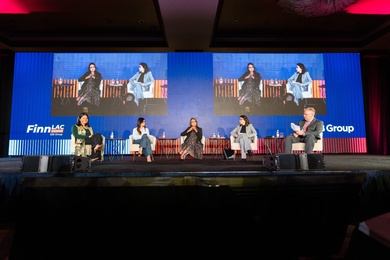Protect to Promote: How to Manage Gender Risks

At the end of 2019, the Government of Iceland hosted Moving Forward, the first major international conference dedicated to the #MeToo movement. The event explored gender-based harassment across the globe and focused on policy, structural and cultural changes to reduce risks for the world’s most vulnerable women.
The event headlined one uncomfortable reality of achieving women’s empowerment – gender equality is about more than mentoring women, training women or promoting women: Equality is first about protecting women.
This headline echoes development finance’s experience as well. In 2016, a community in Africa experienced increased rates of high school dropouts once a transport project began construction. An NGO had discovered project construction workers were assaulting and impregnating local women. Many were socially ostracized and unable to attend school. This led a multilateral development bank to cancel their $265 million investment, highlighting the costly measures taken when unmitigated gender risks snowball.
This isn’t the first time gender risks have jeopardized infrastructure development, community cohesion and women’s livelihoods. Increased stakeholder activism, oftentimes organized by a more influential civil society which leverages the power of social media, is mobilizing more awareness. This is coupled with renewed project attention to meaningful stakeholder engagement, especially with project-affected communities.
Re-framing the gender discussion
In the past, companies got away with the “pink it and shrink it” approach of taking a product and advertising it as more “feminine” by dying it pink and making it smaller. Now investor and company trends are revealing these “pink washing” steps are not only outdated; they risk becoming their own hashtag. The same evolution is happening in the development finance space.
To support Latin American and Caribbean clients and projects, IDB Invest recently developed a new gender assessment that goes beyond the size and color of jumpers and forklifts or asking for the workforce gender data. The assessment includes 65 questions that cut across sectors and is accompanied by guidance notes that provide firms with guidance on the risks for the female workforce as well as communities interacting with their projects. This tool is enhancing our ability to identify gender risks and take measures to overcome them, and it was recently recognized by Standard & Poor’s rating agency as strengthening IDB Invest’s non-financial risk management and portfolio credit quality.
For example, in a recent infrastructure project, the sponsor was required to hire a firm to closely monitor male workers’ lodging facilities in small towns to develop an awareness campaign and establish a clear code of conduct. The goal is to restrict access and promote respectful behaviors in the communities in which they work.
In manufacturing projects, clients have trained women as security guards and created protocols to ensure their safety. Female security guards have helped curb a trend in abuse by male guards towards a female workforce and provide comfort if the company must perform worker pat-downs. Security forces should also observe human rights protection and avoid gender-based violence or abuse.
In tourism, we are exploring the installation of emergency buttons on hotel floors to provide security for women who clean hotel rooms, a profession with disproportionately high rates of sexual harassment, according to the Bureau of Labor Statistics. Sexual exploitation and sexual tourism avoidance programs can also strengthen this sector.
Lastly, in agribusiness, we have encouraged clients to make childcare available and provide adequate female sanitation facilities. An appropriate health and safety evaluation for pregnant workers might be necessary for riskier work environments where women are asked to perform tasks such as heavy lifting.
In all sectors, internal and external complaint outlets called grievance mechanisms must be prepared to deal with sexual violence and harassment, allowing for anonymity, providing special training for attendants and offering additional assistance to persons who file complaints.
To continue to share knowledge on gender risks, IDB Invest is training private sector clients in the region. We will continue building capacity with on-line training opportunities and technical support from our social specialists. Latin America and the Caribbean is embracing the idea that “moving forward” in gender equality, like the Icelandic conference sought to do, is first about protection and then promotion.■
LIKE WHAT YOU JUST READ?
Subscribe to our mailing list to stay informed on the latest IDB Invest news, blog posts, upcoming events, and to learn more about specific areas of interest.
Subscribe



